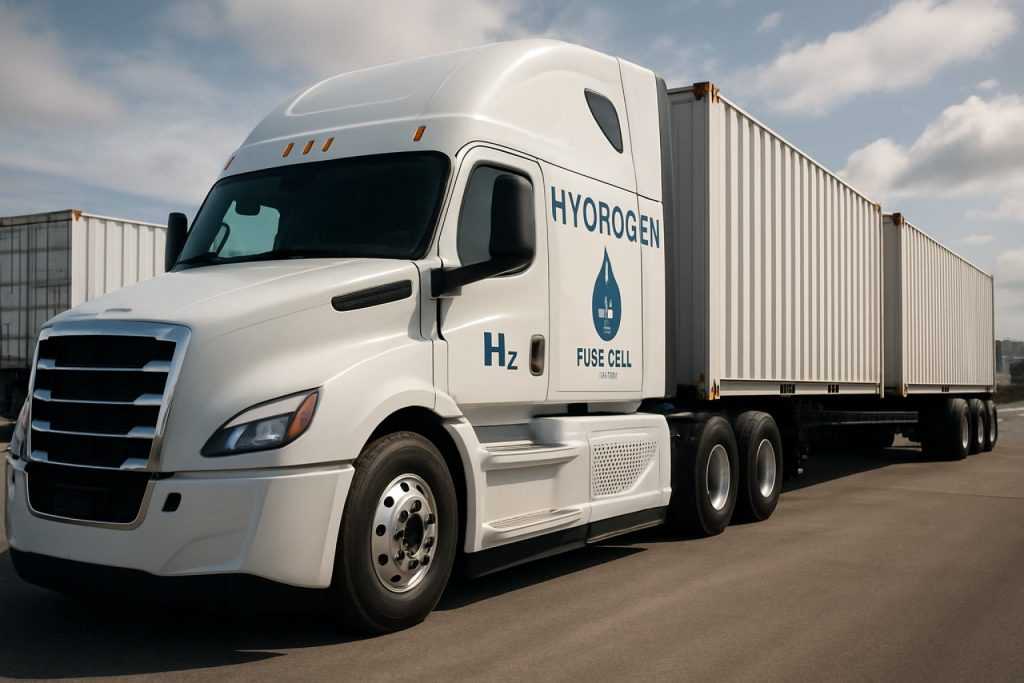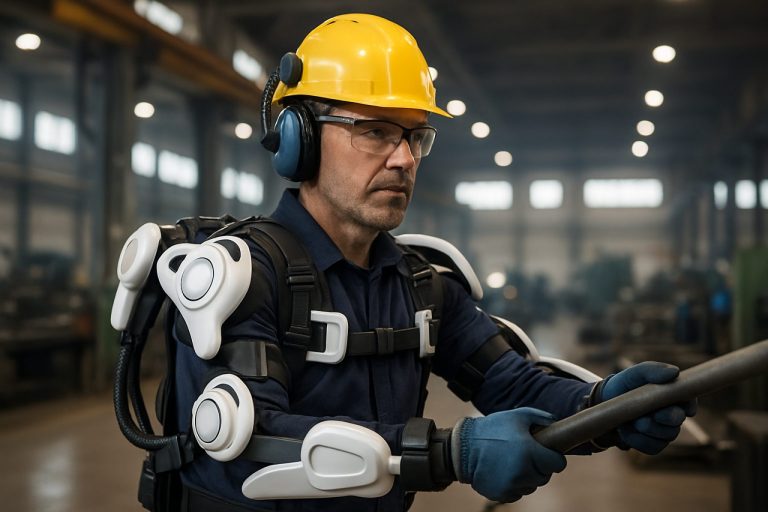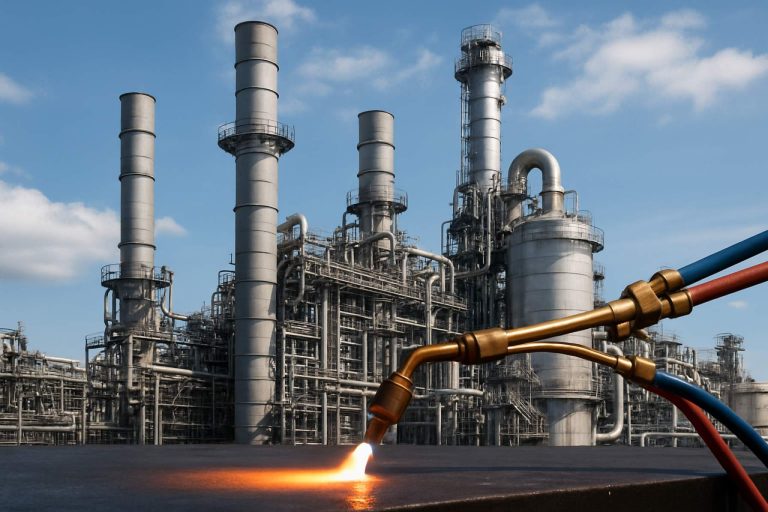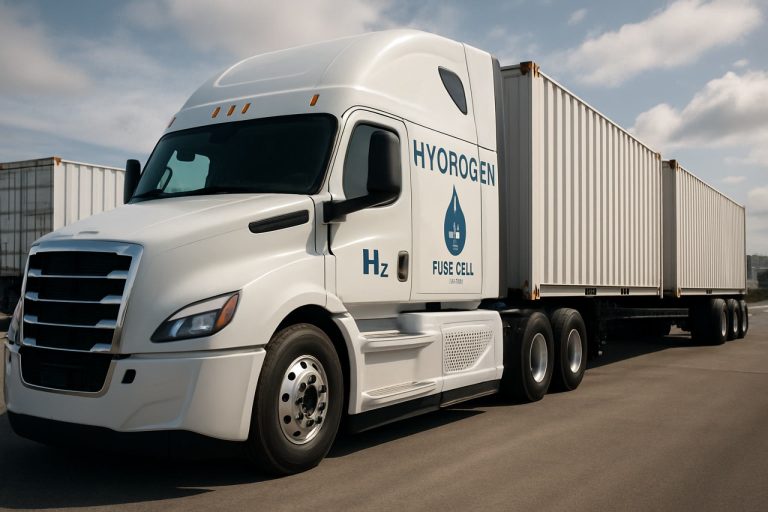
Hydrogen-Powered Drayage Vehicles Market Report 2025: In-Depth Analysis of Growth Drivers, Technology Innovations, and Regional Opportunities. Explore Key Trends, Forecasts, and Competitive Insights Shaping the Industry.
- Executive Summary & Market Overview
- Key Technology Trends in Hydrogen-Powered Drayage Vehicles
- Competitive Landscape and Leading Players
- Market Growth Forecasts (2025–2030): Volume, Value, and CAGR Analysis
- Regional Market Analysis: North America, Europe, Asia-Pacific, and Rest of World
- Challenges, Risks, and Barriers to Adoption
- Opportunities and Strategic Recommendations
- Future Outlook: Policy, Investment, and Innovation Trajectories
- Sources & References
Executive Summary & Market Overview
Hydrogen-powered drayage vehicles are emerging as a pivotal solution in the decarbonization of short-haul freight transport, particularly at ports and intermodal hubs. Drayage refers to the transport of goods over short distances, often as part of a longer overall journey, and is a critical link in global supply chains. Traditionally dominated by diesel-powered trucks, the drayage sector faces mounting regulatory and environmental pressures to reduce greenhouse gas (GHG) emissions and improve air quality in urban and port-adjacent communities.
In 2025, the global market for hydrogen-powered drayage vehicles is experiencing accelerated growth, driven by a confluence of policy mandates, technological advancements, and increasing investment in hydrogen infrastructure. Governments in North America, Europe, and Asia-Pacific are implementing stringent emissions standards and offering incentives for zero-emission vehicle adoption. For example, California’s Advanced Clean Fleets regulation mandates a phased transition to zero-emission drayage trucks, with significant milestones set for 2025 and beyond (California Air Resources Board).
- Market Size & Growth: The global hydrogen truck market, including drayage applications, is projected to reach a value of over $3 billion by 2025, with a compound annual growth rate (CAGR) exceeding 40% from 2022 to 2025 (MarketsandMarkets).
- Key Players: Major OEMs such as Hyundai Motor Company, Toyota Motor Corporation, and Nikola Corporation are actively piloting and commercializing hydrogen-powered drayage trucks, often in partnership with port authorities and logistics providers.
- Infrastructure Development: Investment in hydrogen refueling stations is ramping up, with over 1,000 stations expected globally by 2025, many strategically located near major ports and logistics corridors (H2stations.org).
- Regional Hotspots: California, Germany, the Netherlands, China, and South Korea are leading in pilot deployments and early commercialization, supported by robust policy frameworks and public-private partnerships (International Energy Agency).
Despite challenges such as high vehicle and hydrogen production costs, the market outlook for hydrogen-powered drayage vehicles in 2025 is optimistic. The sector is poised for rapid scaling, underpinned by regulatory momentum, technological innovation, and growing stakeholder commitment to sustainable freight solutions.
Key Technology Trends in Hydrogen-Powered Drayage Vehicles
Hydrogen-powered drayage vehicles are at the forefront of decarbonizing short-haul freight transport, particularly in and around ports and logistics hubs. As the sector moves into 2025, several key technology trends are shaping the adoption and performance of these vehicles.
- Advancements in Fuel Cell Technology: Fuel cell systems are becoming more compact, efficient, and durable, directly addressing the operational demands of drayage. Next-generation proton exchange membrane (PEM) fuel cells offer higher power density and longer lifespans, reducing total cost of ownership. Companies like Ballard Power Systems and Plug Power are leading in commercializing these advanced stacks for heavy-duty applications.
- Rapid Refueling Infrastructure Expansion: The deployment of high-capacity hydrogen refueling stations is accelerating, especially in port regions. Initiatives by Air Liquide and Shell are enabling sub-15-minute refueling for Class 8 trucks, a critical factor for drayage operations that require high vehicle utilization.
- Integration with Digital Fleet Management: Telematics and real-time data analytics are being integrated into hydrogen drayage fleets to optimize route planning, monitor fuel consumption, and predict maintenance needs. This digitalization, supported by platforms from companies like Geotab, enhances operational efficiency and supports regulatory compliance.
- Modular and Scalable Vehicle Platforms: OEMs are developing modular hydrogen powertrains that can be adapted across different drayage vehicle models. Hyundai Motor Company and Toyota Motor Corporation are piloting scalable platforms that allow for rapid deployment and easier maintenance.
- Cost Reduction through Supply Chain Localization: Efforts to localize hydrogen production and fuel cell assembly are reducing costs and improving supply chain resilience. Regional hydrogen hubs, supported by government and private investment, are emerging in California and Europe, as highlighted by U.S. Department of Energy initiatives.
These technology trends are converging to make hydrogen-powered drayage vehicles increasingly viable for commercial fleets, with 2025 expected to see significant pilot deployments and early commercial rollouts in key logistics corridors.
Competitive Landscape and Leading Players
The competitive landscape for hydrogen-powered drayage vehicles in 2025 is characterized by a dynamic mix of established automotive manufacturers, innovative startups, and strategic partnerships with fuel cell technology providers. The sector is witnessing intensified activity as regulatory pressures and zero-emission mandates in key logistics hubs—such as California’s ports—accelerate the shift from diesel to hydrogen fuel cell solutions.
Leading the market are companies like Toyota Motor Corporation, which has leveraged its Mirai fuel cell technology to develop heavy-duty hydrogen trucks in collaboration with Kenworth Truck Company. Their joint efforts have resulted in pilot deployments at the Port of Los Angeles, demonstrating both technical feasibility and operational reliability. Similarly, Hyundai Motor Company has advanced its XCIENT Fuel Cell trucks, targeting North American drayage operations with multi-year demonstration projects and plans for commercial rollouts.
Among startups, Nikola Corporation remains a prominent player, despite past controversies, with its Tre FCEV (fuel cell electric vehicle) drayage truck entering limited production and securing orders from major logistics operators. Hyzon Motors is also gaining traction, focusing on modular fuel cell systems and partnerships with fleet operators for port drayage applications in the U.S. and Europe.
Fuel cell technology providers such as Ballard Power Systems and Plug Power Inc. play a critical role, supplying core components and collaborating with OEMs to accelerate commercialization. These partnerships are essential for scaling up production and reducing costs, which remain key challenges for widespread adoption.
The competitive environment is further shaped by government-backed initiatives and funding programs, such as California’s Hybrid and Zero-Emission Truck and Bus Voucher Incentive Project (HVIP), which incentivize early adoption and lower the total cost of ownership for fleet operators. As a result, the market is expected to see increased entries from both traditional truck manufacturers and new entrants, intensifying competition and driving innovation in hydrogen-powered drayage vehicles.
Market Growth Forecasts (2025–2030): Volume, Value, and CAGR Analysis
The market for hydrogen-powered drayage vehicles is poised for significant expansion between 2025 and 2030, driven by tightening emissions regulations, advancements in fuel cell technology, and increasing investments in hydrogen infrastructure. According to projections by IDTechEx, the global fuel cell truck market—including drayage vehicles—is expected to achieve a compound annual growth rate (CAGR) exceeding 40% during this period, with North America, Europe, and East Asia leading adoption.
In terms of volume, the annual deployment of hydrogen-powered drayage trucks is forecast to rise from fewer than 1,000 units in 2025 to over 10,000 units by 2030. This surge is underpinned by large-scale fleet commitments from logistics operators and port authorities, particularly in California and major European ports, where zero-emission mandates are accelerating fleet turnover. For instance, the Port of Los Angeles and Port of Long Beach have set ambitious targets to transition all drayage trucks to zero-emission models by 2035, with hydrogen fuel cell vehicles playing a pivotal role.
- Market Value: The global market value for hydrogen-powered drayage vehicles is projected to grow from approximately $200 million in 2025 to over $2.5 billion by 2030, according to BCC Research. This growth is attributed to both rising unit sales and higher average selling prices, reflecting the premium for early-stage fuel cell technology and integrated hydrogen solutions.
- Regional Dynamics: North America is expected to account for the largest share of market value and volume, followed by Europe and China. Government incentives, such as the U.S. Inflation Reduction Act and the EU’s Fit for 55 package, are catalyzing fleet conversions and infrastructure buildout.
- Key Drivers: The primary growth drivers include stricter emissions standards, declining hydrogen production costs, and the expansion of refueling networks by companies like Air Liquide and Shell.
Overall, the 2025–2030 period is expected to mark a transition from pilot deployments to early mass adoption, with the hydrogen-powered drayage vehicle market entering a high-growth phase characterized by rapid scaling and increasing commercial viability.
Regional Market Analysis: North America, Europe, Asia-Pacific, and Rest of World
The market for hydrogen-powered drayage vehicles is experiencing differentiated growth across key regions—North America, Europe, Asia-Pacific, and the Rest of the World—driven by regulatory frameworks, infrastructure development, and decarbonization targets.
North America is witnessing robust momentum, particularly in the United States and Canada, where port authorities and logistics operators are piloting hydrogen drayage trucks to meet stringent emissions mandates. California’s Advanced Clean Fleets regulation, for example, is accelerating the adoption of zero-emission vehicles at major ports such as Los Angeles and Long Beach. Companies like Nikola Corporation and Hyzon Motors are deploying hydrogen fuel cell trucks in commercial trials, supported by federal and state incentives. The North American market is projected to see a compound annual growth rate (CAGR) exceeding 30% through 2025, as infrastructure investments and public-private partnerships expand hydrogen refueling networks (National Renewable Energy Laboratory).
Europe is advancing rapidly, propelled by the European Union’s Green Deal and Fit for 55 package, which set ambitious targets for reducing transport emissions. Major logistics hubs in the Netherlands, Germany, and France are integrating hydrogen-powered drayage vehicles, with support from initiatives like the Fuel Cells and Hydrogen Joint Undertaking. OEMs such as Daimler Truck and Volvo Trucks are collaborating with fleet operators to deploy pilot fleets. The region’s focus on cross-border corridors and green hydrogen production is expected to drive double-digit market growth in 2025 (International Energy Agency).
- Asia-Pacific leads in scale, with China, Japan, and South Korea investing heavily in hydrogen mobility. China’s 2025 targets for fuel cell vehicle deployment and the construction of over 1,000 hydrogen refueling stations are catalyzing adoption in port cities like Shanghai and Shenzhen (China Association of Automobile Manufacturers). Japanese and Korean automakers, including Toyota and Hyundai, are expanding their hydrogen truck portfolios, supported by government subsidies and infrastructure rollouts.
- Rest of World markets, including Australia and the Middle East, are in earlier stages but show growing interest. Australia’s National Hydrogen Strategy and pilot projects in the UAE are laying the groundwork for future market entry (Clean Energy Finance Corporation).
Overall, 2025 is set to be a pivotal year for hydrogen-powered drayage vehicles, with regional dynamics shaped by policy, infrastructure, and industry collaboration.
Challenges, Risks, and Barriers to Adoption
Hydrogen-powered drayage vehicles, while promising for decarbonizing short-haul freight, face a complex array of challenges, risks, and barriers to widespread adoption in 2025. One of the most significant hurdles is the underdeveloped hydrogen refueling infrastructure. The limited number of hydrogen stations, especially near major ports and logistics hubs, restricts operational flexibility and route planning for fleet operators. According to the U.S. Department of Energy, the current pace of infrastructure deployment lags behind the needs of commercial fleets, creating a classic “chicken-and-egg” dilemma.
Cost remains a critical barrier. Hydrogen fuel cell vehicles (FCVs) are typically more expensive than their diesel or battery-electric counterparts, both in terms of upfront capital expenditure and, in many regions, ongoing fuel costs. The National Renewable Energy Laboratory notes that while hydrogen prices are expected to decline with scale and technological advances, in 2025, they remain volatile and often uncompetitive without subsidies or incentives.
Technological maturity is another concern. While hydrogen FCVs have demonstrated reliability in controlled environments, their long-term durability and performance in demanding drayage operations—characterized by frequent stops, heavy loads, and port congestion—are still being validated. Maintenance and repair networks for hydrogen vehicles are also less established compared to those for diesel or battery-electric trucks, increasing operational risk for early adopters.
Regulatory uncertainty further complicates investment decisions. While some jurisdictions offer incentives for zero-emission vehicles, the policy landscape is fragmented and subject to change. The California Air Resources Board has set ambitious targets for zero-emission drayage, but the specifics of compliance timelines, credit mechanisms, and enforcement remain in flux, creating planning challenges for fleet operators.
Finally, supply chain constraints for key components—such as fuel cells, high-pressure tanks, and green hydrogen—pose risks of production bottlenecks and price spikes. The International Energy Agency highlights that most hydrogen produced today is not “green,” and scaling up renewable hydrogen production is capital-intensive and time-consuming.
In summary, while hydrogen-powered drayage vehicles offer significant environmental benefits, their adoption in 2025 is impeded by infrastructure gaps, high costs, technological and supply chain uncertainties, and a shifting regulatory environment.
Opportunities and Strategic Recommendations
The market for hydrogen-powered drayage vehicles in 2025 presents significant opportunities, driven by tightening emissions regulations, port decarbonization mandates, and growing corporate sustainability commitments. As major logistics hubs and ports—such as those in California and Europe—move to phase out diesel drayage trucks, hydrogen fuel cell vehicles (FCEVs) are emerging as a viable alternative due to their fast refueling times and long operational ranges compared to battery-electric trucks. This positions hydrogen-powered drayage as a strategic solution for high-utilization, heavy-duty applications where operational uptime is critical.
Key opportunities include:
- Regulatory Incentives: Governments are offering substantial incentives for zero-emission drayage vehicles. For example, the California Air Resources Board provides grants and credits for fleets adopting hydrogen FCEVs, while the European Union’s Fit for 55 package accelerates the shift to clean transport.
- Port and Fleet Partnerships: Strategic collaborations with port authorities and major fleet operators can accelerate adoption. Initiatives like the Port of Los Angeles’s Clean Truck Program and partnerships with logistics giants such as A.P. Moller – Maersk create early-mover advantages for OEMs and hydrogen suppliers.
- Hydrogen Infrastructure Expansion: Investments in hydrogen refueling infrastructure, supported by public-private partnerships, are reducing range anxiety and operational barriers. Companies like Air Liquide and Shell are actively expanding hydrogen stations at key logistics corridors.
- Technology Differentiation: OEMs that can deliver reliable, cost-competitive FCEV drayage trucks with high payload capacity and minimal downtime will capture market share as fleets seek proven alternatives to diesel.
Strategic recommendations for stakeholders include:
- OEMs: Accelerate pilot deployments with major ports and logistics companies to validate performance and build customer confidence.
- Hydrogen Suppliers: Prioritize infrastructure buildout along high-traffic drayage routes and offer bundled fuel and maintenance packages to lower total cost of ownership.
- Fleet Operators: Leverage available incentives and participate in demonstration projects to gain operational experience and position for regulatory compliance.
- Policy Makers: Continue to align incentives, infrastructure funding, and emissions standards to support rapid market scaling.
With coordinated action, hydrogen-powered drayage vehicles can play a pivotal role in decarbonizing freight transport and meeting 2025 emissions targets.
Future Outlook: Policy, Investment, and Innovation Trajectories
The future outlook for hydrogen-powered drayage vehicles in 2025 is shaped by a confluence of progressive policy frameworks, increasing investment flows, and rapid technological innovation. Governments worldwide are intensifying their decarbonization mandates, particularly in logistics and freight corridors, to meet ambitious climate targets. In the United States, the Inflation Reduction Act and state-level initiatives such as California’s Advanced Clean Fleets regulation are accelerating the adoption of zero-emission drayage trucks, with hydrogen fuel cell vehicles (FCEVs) positioned as a key solution for high-utilization, long-haul, and heavy-duty applications California Air Resources Board.
On the investment front, 2025 is expected to see a surge in both public and private capital directed toward hydrogen infrastructure and vehicle deployment. Major automakers and technology providers, including Toyota Motor Corporation and Hyundai Motor Company, are scaling up production of hydrogen-powered trucks, while logistics giants such as Nikola Corporation and Hyzon Motors are expanding pilot fleets and commercial offerings. According to BloombergNEF, global investment in hydrogen infrastructure is projected to exceed $50 billion by 2025, with a significant portion earmarked for refueling stations and supply chain development in key port regions.
- Policy: Regulatory certainty and incentives are catalyzing fleet operators to transition to hydrogen, with zero-emission mandates and low-carbon fuel standards providing clear market signals.
- Investment: Venture capital, strategic partnerships, and government grants are converging to de-risk early deployments and scale up manufacturing capacity for both vehicles and fueling infrastructure.
- Innovation: Advances in fuel cell efficiency, hydrogen storage, and green hydrogen production are reducing total cost of ownership and improving vehicle range and refueling times, making FCEVs increasingly competitive with battery-electric and diesel alternatives.
Looking ahead, the interplay of supportive policy, robust investment, and ongoing innovation is expected to drive exponential growth in hydrogen-powered drayage vehicles. By the end of 2025, market analysts anticipate a marked increase in commercial deployments, particularly in North America, Europe, and East Asia, setting the stage for hydrogen to become a mainstream solution in sustainable freight transport International Energy Agency.
Sources & References
- California Air Resources Board
- MarketsandMarkets
- Hyundai Motor Company
- H2stations.org
- International Energy Agency
- Ballard Power Systems
- Air Liquide
- Shell
- Toyota Motor Corporation
- Kenworth Truck Company
- IDTechEx
- BCC Research
- National Renewable Energy Laboratory
- Daimler Truck
- Volvo Trucks
- Toyota
- Clean Energy Finance Corporation
- A.P. Moller – Maersk
- Nikola Corporation



